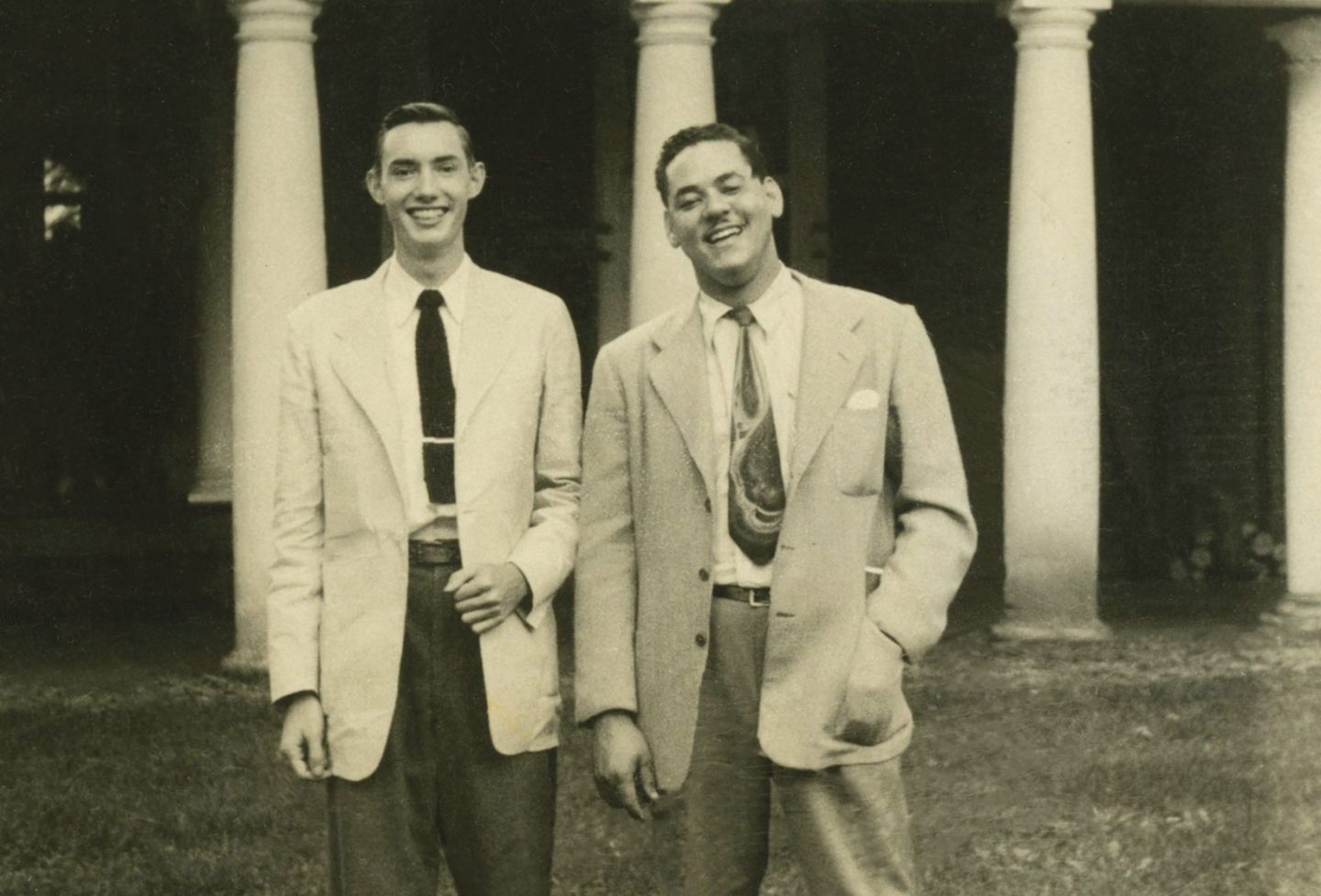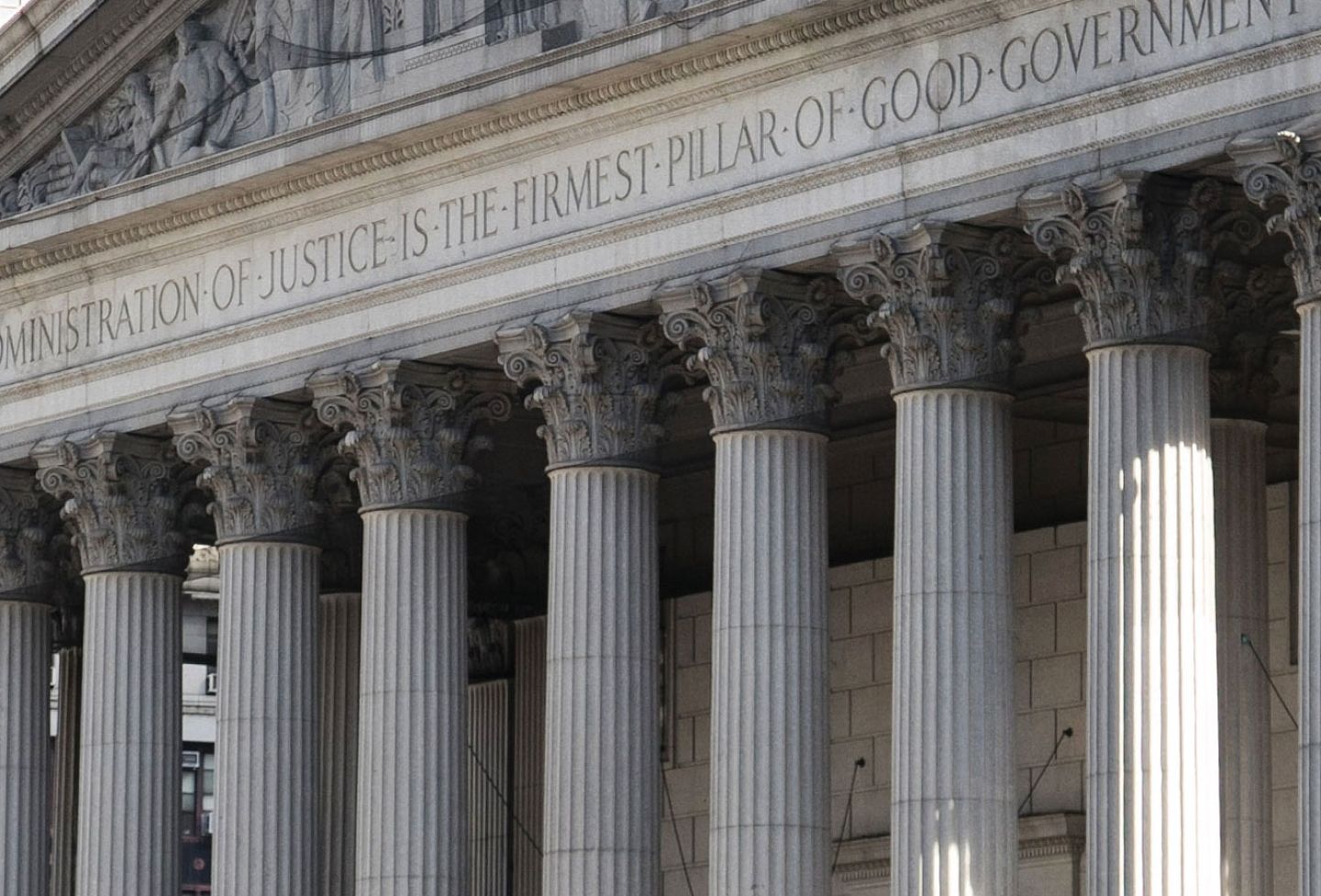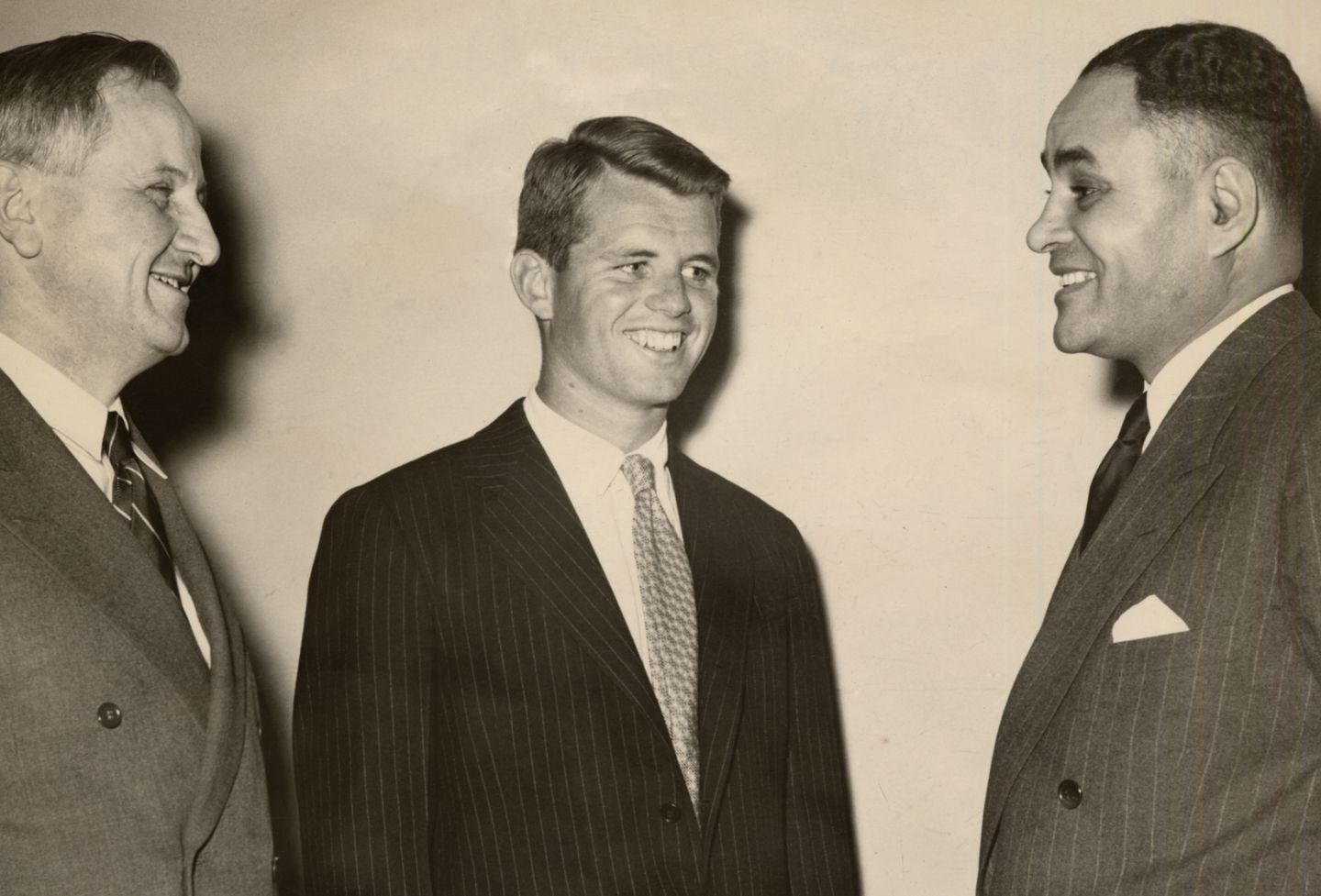What kind of stones build a strong foundation? Milestones.
The law school celebrated a significant milestone last year by surpassing $500 million in endowment — the fifth-largest among all law schools, public or private.
The engine of this success is the Law School Foundation and the alumni it serves. Members of the Law School Alumni Association, formed in 1921, created the Foundation in 1952 as a trust. They formally incorporated the Foundation in 1968 — five decades ago this year.
The Foundation launched its first annual giving campaign in a passionate letter to alumni dated Sept. 9, 1965.
“I am told that a fanatic is a man who redoubles his efforts after forgetting his aim,” Dean Hardy Cross Dillard ’27 wrote. “Well, we haven’t forgotten our aim: It is to build the best law school in the United States and to achieve not spotty excellence but total excellence — faculty, students, staff, library, law review, moot court, placement office, student activities, graduate work — up and down the line.”
Dillard knew that UVA Law alumni would never settle for anything less. And they haven’t. For the past 12 years, the alumni giving rate has exceeded 50 percent and even touched 54 percent.
How did the alumni participation rate at Virginia become the gold standard of legal education? The “secret sauce,” according to Helen M. Snyder ’87, chief operating officer and director of annual giving, is simple: People enjoy their time here.
“So many alumni say this was the best three years of their life,” Snyder said. “The secret is the school. Our peers say it’s not fair because our student experience is such an advantage.”
Loyal and generous giving has also dovetailed with the Foundation’s role in the Law School business model.
Financial Self-Sufficiency
The Law School became financially self-sufficient in 2002, an arrangement with the University that permits flexibility on tuition and some autonomy on managing the Law School in exchange for a tax the Law School pays to the University for indirect costs. (The school also shoulders operating costs, such as replacing windows.)
Under financial self-sufficiency, the Law School does not accept any state funds and relies exclusively on tuition and private support.
“It was a vision held by the Law School and shared by the University in order to secure excellence and compete at the highest level,” said Luis Alvarez Jr. ’88, president and chief executive of the Law School Foundation.
Alumni and other donors would have to contribute to make it work. Resources matter, and before financial self-sufficiency, Virginia lagged its peers in giving and endowment. Comparatively low tuition widened the gap.
“But since the advent of financial self-sufficiency, Virginia has soared,” Alvarez said.
Fundraising became essential to the Law School’s success. Virginia is financed just like its private peers, with the challenges and opportunities that come with it.
The results of self-sufficiency’s success have been passed on to the benefit of students and faculty, Alvarez said.
Virginia provides substantial financial aid to more students and in greater sums than ever before. It now guarantees summer stipends to all students who accept public interest internships, as well as postgraduate loan forgiveness for every student who enters qualifying public service or private practice in underserved parts of the state. Virginia has recruited and retained a new generation of faculty whose scholarship is supported with program funding and research professorships. Exceptionally prepared students and alumni are obtaining judicial clerkships in record numbers, including on the Supreme Court of the United States, where only Harvard, Yale and Stanford have placed more clerks in the last decade.
“Most importantly, the sense of community that defines the Law School culture remains strong,” Alvarez said.
Virginia is often No. 1 in Princeton Review for its quality of life and was awarded that spot again this year.
The Law School has excelled under financial self-sufficiency, but bringing it to fruition required allies in the University and the Board of Visitors who had faith. The concept was one that had never been tried before.
“There was no template,” noted Leonard Sandridge, UVA’s former executive vice president and chief operating officer, one of the key drivers of the plan who persuaded the UVA Board of Visitors to consider it in the mid-1990s. “We created the template.”
Two of the plan’s other chief proponents, Dean Robert Scott and his successor, Dean John C. Jeffries Jr. ’73, had canvassed alumni for years. They heard a need for the Law School to control its own destiny, including the management and use of their donations.
The deans heard correctly. The plan was a triumph.
The Law School’s structure is often referred to by its peers as “the Virginia model.” The agreement has become a bellwether in legal education. In the years following its approval, the Berkeley and Michigan law schools pursued similar arrangements with their universities.
“It was a good deal for the Law School because we got more revenue, and a good deal for the University because they shared in that new revenue and no longer had to give the Law School state funds,” Jeffries said. “We thought it was a win-win situation, and experience has borne that out.”
Dean Risa Goluboff describes financial self-sufficiency as “the bedrock of the Law School’s success” over the past 15 years.
“The combination of financial self-sufficiency and the generosity of our alumni enables the Law School to provide our students the best legal education available, support groundbreaking scholarship, and serve our community, commonwealth, country and beyond. Our ambitions are grand, and financial self-sufficiency is what makes them all possible,” she said.
“We’re privileged to be part of one of the nation’s great public universities, but also to have the flexibility we need under financial self-sufficiency to compete at the highest levels with the law schools of our private peers.”
Reaching $500 Million — And Beyond
Reminders of the charitable nature of UVA Law alums can be found everywhere one looks on the David A. Harrison III ’41 Law Grounds.
Students hear from guest speakers in Caplin Auditorium and Caplin Pavilion thanks to Mortimer Caplin ’40; attend classes in Slaughter Hall thanks to Jim Slaughter ’51 and the Horace W. Goldsmith Foundation; and receive career counseling in the Karsh Student Services Center thanks to Martha Lubin Karsh ’81 and Bruce A. Karsh ’80. One of their favorite places to spend time between classes is the HMZ Class of 1975 Student-Faculty Center, thanks to 1975 classmates Michael J. Horvitz, David L. Mulliken and Robert G. Zack.
Alvarez said broad support is what defines a strong institution: "Our motto is every alum matters and every gift counts.”
He added with a laugh, “Of course, large donations are always welcome!”
Getting to a half-billion dollars in endowment took decades. Not only did it require steady giving from thousands of graduates, but their participation was secured by hundreds of volunteers who engage fellow alumni in their classes and cities. Their efforts are championed by “the finest alumni leadership in legal education," Alvarez said, extolling the members of the Board of Trustees and Alumni Council.
“They are devoted to the Law School and its alumni, and they are the dean’s greatest allies. They know the Law School is special, and they help keep it that way.”
F. Blair Wimbush ’80 currently chairs the Board of Trustees, a responsibility he is proud to help carry forward, he said.
“We owe our current prosperity to the solid groundwork laid by our predecessors,” Wimbush said. “Our responsibility now, as stewards of the Foundation, is to build on the strength and security they began.”
As the Law School and the University embark on their next 200 years, and a bicentennial fundraising campaign, what will it take to reach the next financial milestone?
“It will require us to engage with every graduate to give them a chance to do what they can to support the future of this incredible institution and the people who make it special,” Wimbush said. “The campaign’s emphasis on financial aid and public service means that gifts for those priorities will provide benefits twice over — to the financial security of the Law School into its third century and to our students and society as a whole.”
Why It Still Makes Sense To Give
The tax laws have changed, and millions more taxpayers are forecast to take the income tax standard deduction rather than itemize in 2018. In light of this fact, does it still make sense to give to charities like the Law School Foundation?
“Of course,” answered Elizabeth Leverage Hilles ’92, the Foundation’s senior philanthropy adviser. “Tax rules don’t create philanthropy — the desire to support a charity’s good work does.” She said that tax incentives might affect amount and timing, but itemizers and non-itemizers both “part with hard-earned dollars to invest in a charity’s mission; it’s a deduction, not a credit.”
What hasn’t changed, Hilles said, is the generous nature of UVA Law alumni. “They are incredibly loyal and engaged.”
Hilles noted that individual situations differ, “so always check with your advisers to determine the most effective giving strategy for you.”
Thoughts for Alumni Considering a Gift to the Foundation This Year
- You can still avoid 100 percent of capital gain on donations of appreciated securities (and get a fair market value deduction if itemizing).
- If you are close to itemizing, consider front-loading donations one year, and then taking the standard deduction the following year.
- If you are 50 or older, a charitable gift annuity or trust (“life income” gifts) may yield a larger deduction for itemizing.
- If you are at least 70½, you can still make a qualified charitable distribution from your IRA. You can transfer up to $100,000, remove the entire amount from taxable income and apply it to your required minimum distribution.
- For everyone, retirement plans are great assets for legacy gifts. Charities don’t pay income tax on them, but all other beneficiaries will.




